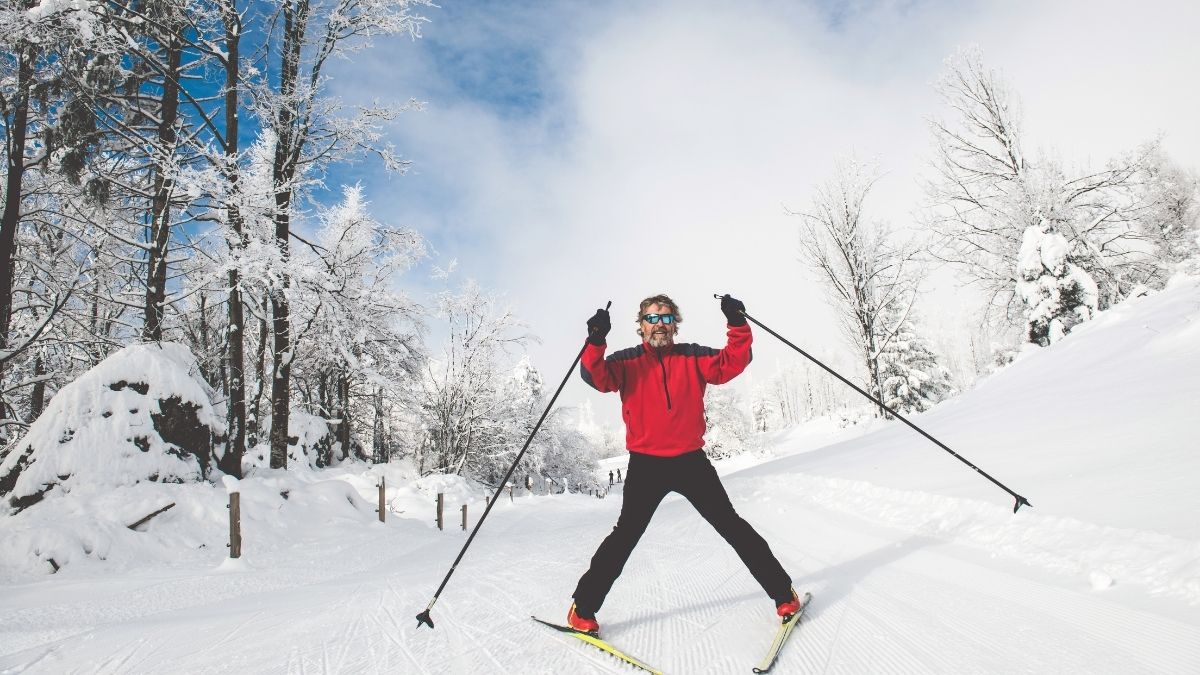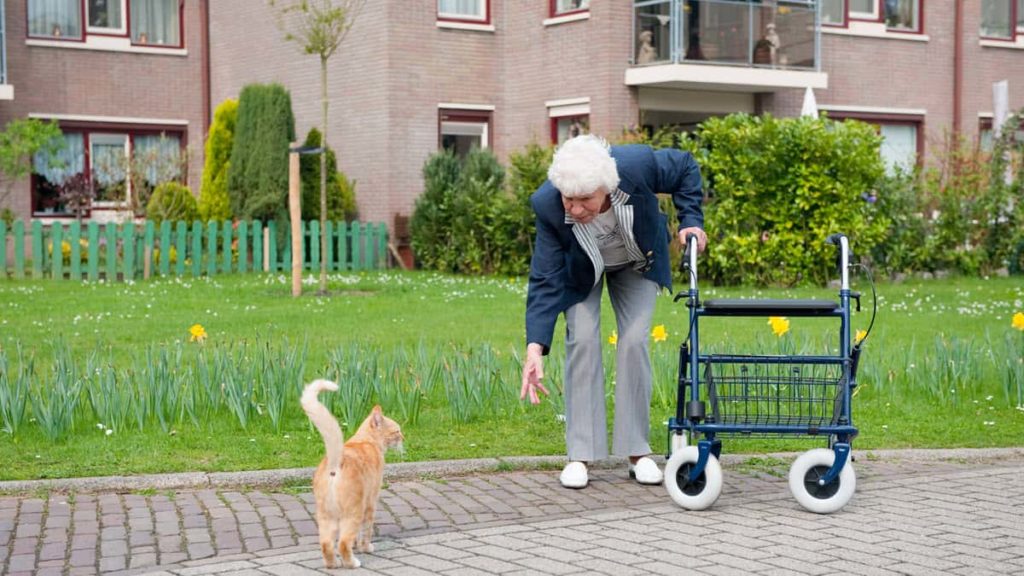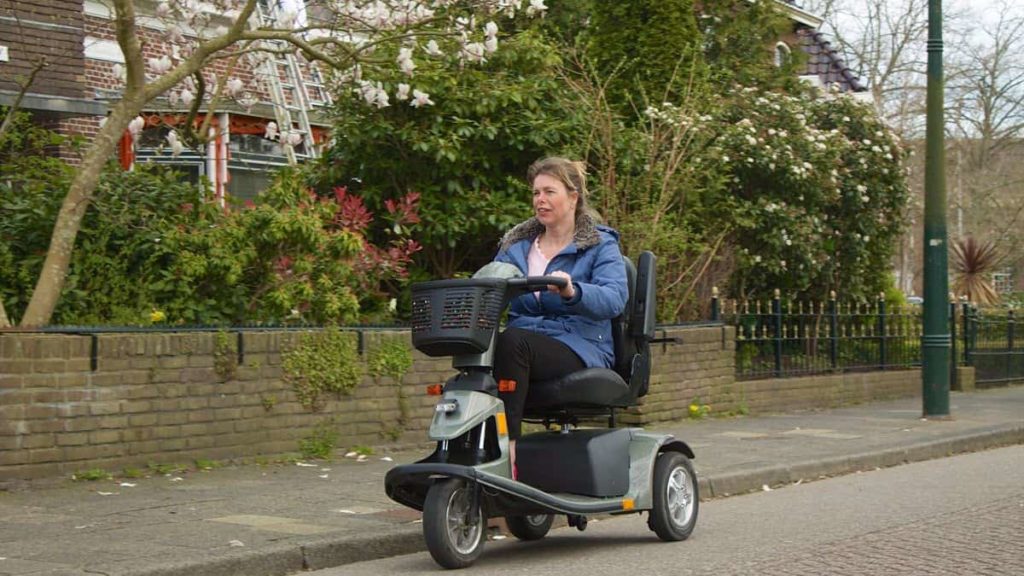10 Benefits of Cross Country Skiing for Seniors (Stay Young at Heart!)
Cross-country skiing is the oldest form of skiing. Unlike its downhill counterpart, it depends on the technique of the skier instead of the use of lifts or other infrastructure to climb slopes. And don’t worry – you do not need to be an athlete to take part!
In this article, you’ll find everything you need to know about cross-country skiing and the ten benefits for seniors.
What is cross-country skiing?
The sport has grown in popularity because of its simplicity – it is actually kinder to the body to ski rather than run! This does not mean that it does not provide a good workout. The opposite is in fact true – cross-country skiing works all of the muscle groups at the same time providing amazing health benefits for skiers.
Cross country skiing also has an advantage in that it can be practiced away from the crowds on trails through forests and mountains, providing an experience like no other. Think of gliding through a beautiful landscape with nothing but the noise of nature and your skis – doesn’t it sound wonderful?
Cross Country Skiing For Beginners
Before beginning any exercise, it is a good idea to build up your fitness first, especially if there are some areas of the body that are particularly weak. Check out our guide to exercise equipment for bad knees to help prepare you for your skiing adventures. You may also need to consult your physician before starting any new exercise routine.
There are two forms of cross country skiing – skate and classic. Skate is more of a freestyle form, whereas classic involves keeping your ski’s parallel while gliding along pre-prepared grooves. It is the latter style that is recommended for beginners.
To get started, you just need the right equipment. Boots, skis, and poles are all required, and it is best to ask the store that you are renting/buying from for advice on the best equipment for your needs.

It is important to pick the correct terrain for your first few trips out on your skis. Large, flat stretches of land are perfect for beginner skiers, and gentle hills are best to try out downhill skiing first.
Top 10 Potential Health Benefits of Cross Country Skiing
1. Increases fitness whilst remaining low-impact
While cross country skiing is an amazing workout for your muscles, it is also very gentle. As this activity is low impact, it means that less pressure is put onto your joints, making it a suitable activity for some with conditions such as arthritis.
Unlike another habit that you may have, such as cycling where you need to maintain a consistent speed to keep going, with this type of skiing you can go as fast or as slow as you like. It is also a safe way to get your body moving as falling in soft snow is unlikely to hurt too much.
2. Reduces stress
With cross country skiing, you are in control, there is nobody else putting pressure on you. This means that you can choose how you move while taking in the beautiful landscapes that often surround you.
3. Increases endurance
Cross country skiing is an endurance sport as it will improve your oxygen uptake and blood circulation.
Because of the gentle pace of this activity, you will find that over time you are able to ski for longer and further as you get the hang of the exercise. With more practice will come increased overall fitness.
4. Improves mental health
There are multiple studies on how engaging in sports activities improves one’s state of mind. When you exercise, endorphins are produced which triggers a positive feeling which improves your overall mental health.
The advantages of exercising through cross-country skiing are that you are often engulfed in nature, providing a state of calmness and an escape from the hustle and bustle of normal life. This provides an opportunity for mindfulness and reflection, as well as a method of de-stressing.
5. Contributes towards weight loss
Cross-country skiing is a demanding workout that engages all the muscles in the body. As one of the more challenging cardio sports that you can try, this activity will have you burning a substantial number of calories helping you to lose weight.

6. Works out every muscle group
One of the main ways that cross country skiing benefits people is that it involves the use of every muscle group in the body.
The use of ski poles provides a great workout for the upper body, making cross country skiing a better exercise than running or cycling, and of course, your leg muscles are worked with every stride you take on your skis.
Consistent practice of skiing will improve the strength of all of your muscles and will increase the overall health of your body.
7. Strengthens cardiovascular health
One of the best health benefits of cross-country skiing is that it raises your heart rate and increases blood flow. Taking part in this exercise regularly will increase the strength of your heart, as your hearts’ capacity to pump blood will be strengthened as well as your capacity to circulate oxygen around the body.
8. Promotes social engagement
One of the reasons that cross country skiing is so fun is that it is an incredibly social activity, as you can do it with other people. As you can go at the same pace as other people, it is a great way to spend quality time with your loved ones. A way to both exercise and improve your relationships? What are you waiting for!
9. Trains your body to function better
Cross country skiing increases your ‘kinesthetic sense’. To put it another way, the ability to recognize the senses of position and movement of the body.
In addition, the gliding motion and downhill skiing that is involved increase your balance, which is especially important as we age and become more susceptible to falls.
10. Helps to reduce lactic acid
Cross country skiing improves the body’s potential to tolerate and thus reduce lactic acid, as it can prevent the build-up of the acid in the body which can cause severe pain.
Jill believes that life just keeps getting better as she gets older. She believes everyone can live a full life of endless possibilities, with the right mindset, a healthy diet and with exercise.





